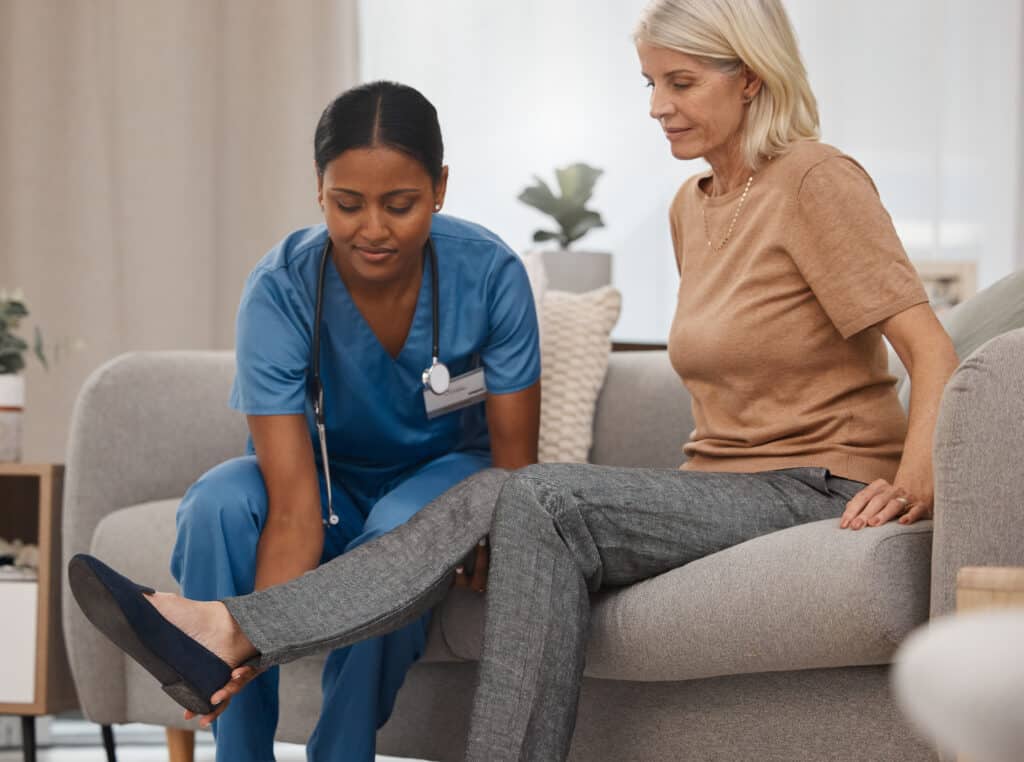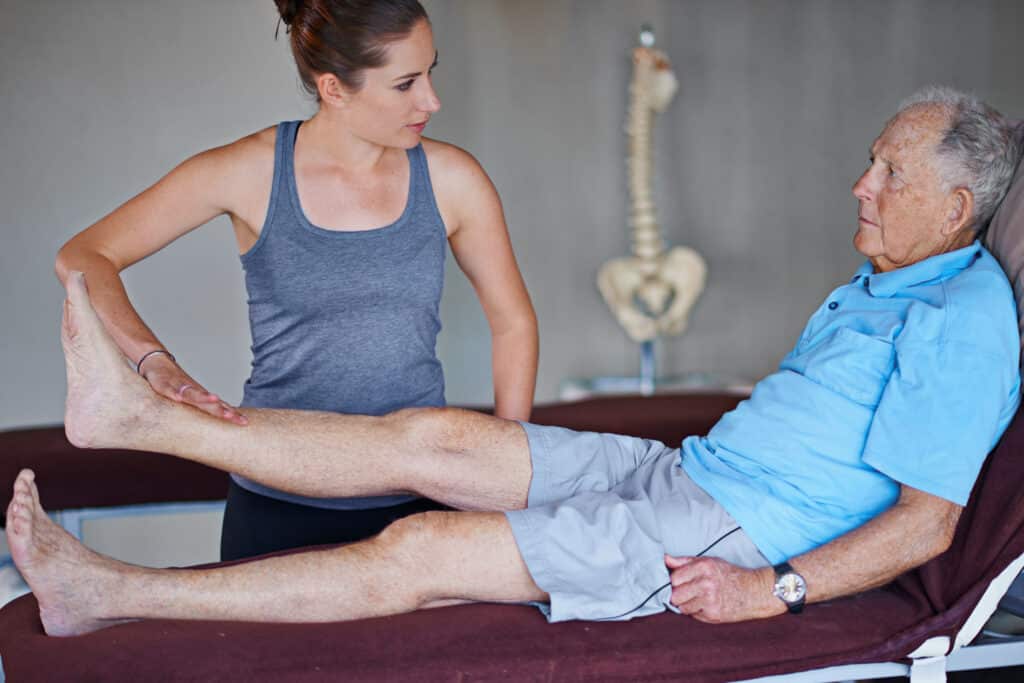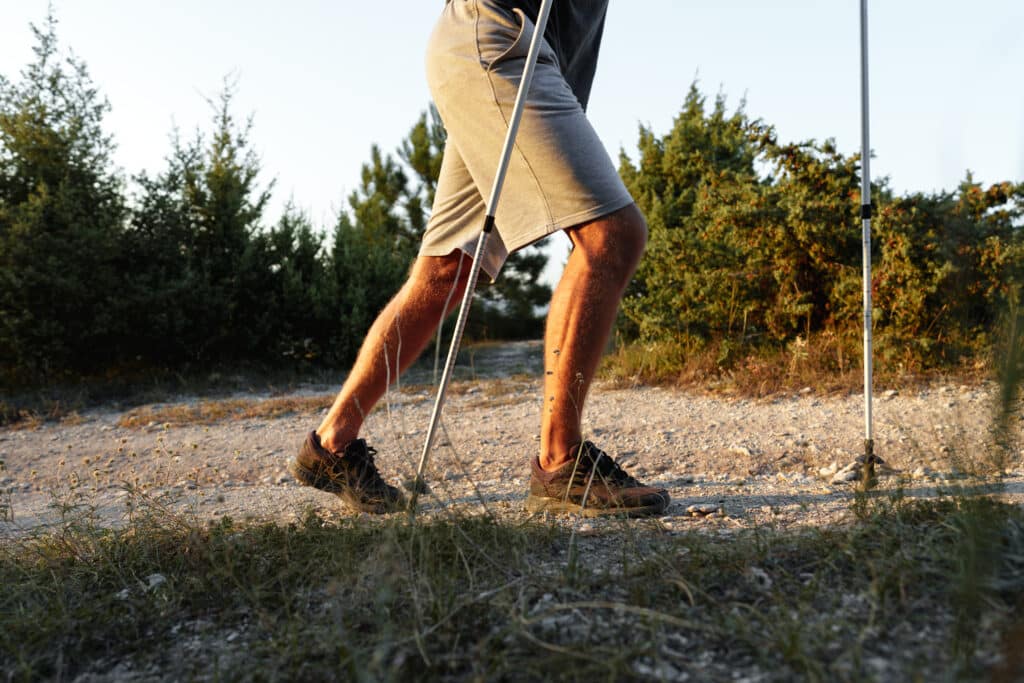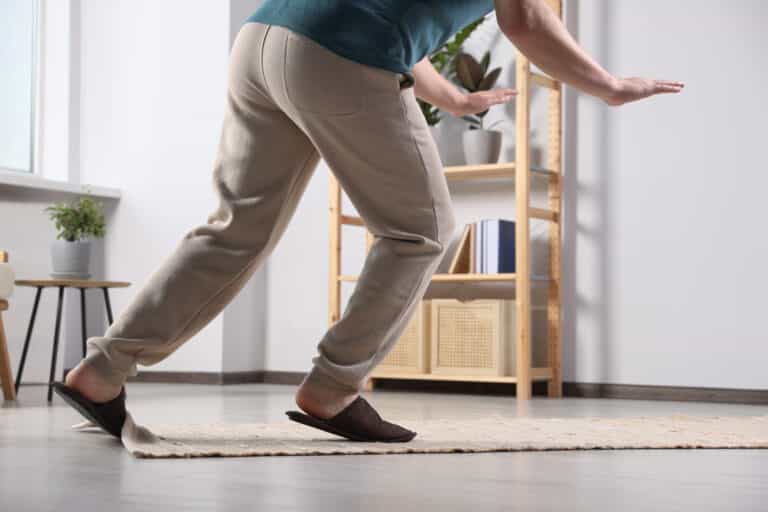Experiencing discomfort along the outer side of your lower leg? This might be a sign of peroneal tendonitis. While not critical, it can interfere with daily activities, especially for older adults.
In this article, we will explain what peroneal tendonitis is, how it is diagnosed and treated, and how to prevent it from happening through good self-care habits.
By the end, you should feel more empowered to manage peroneal tendonitis confidently and to take steps to improve your overall quality of life. Let’s dive deeper to understand peroneal tendonitis, its treatment, and prevention strategies to keep pain at bay.
What is Peroneal Tendonitis?
Peroneal tendonitis relates to the tendons of the small muscles on the outside of your lower leg, from the upper calf down to the outer foot. These are called the fibularis muscles or the peroneal complex. Their primary purposes include:
- Stabilizing the ankle and preventing it from rolling inward.
- Turning the foot outward (eversion).
- Assisting in walking, running, and jumping.
- Stabilizing the leg during balance activities.
Peroneal tendonitis occurs when these tendons become inflamed or irritated due to injury, overuse, or other stressors. This inflammation causes pain, swelling, and tenderness along the outside of the ankle and foot.
Many patients report pain that may be worse when moving their ankle, especially when turning it outward against resistance. The affected area may feel warm or red, and there may be a cracking or popping sound when moving the irritated ankle.
Some of the typical triggers include:
- Excessive physical activity without adequate rest, like frequent running, hiking, or dancing.
- Wearing improper footwear that does not provide enough support, cushioning, or stability
- An excessively flat foot or high arch, both of which increase stress on the peroneal tendons.
- A history of ankle dysfunction or injury.
- Inadequate calf muscle strength or flexibility to support the peroneal tendons.
Runners are particularly susceptible to peroneal tendonitis due to the repetitive stress they place on their feet. However, your health history, weight, and overall activity level also play a significant role regardless of age.
Ankle pain is common among my senior patients, and early diagnosis is crucial for effective management. So, how do you determine if you’re dealing with peroneal tendonitis?
How is Peroneal Tendonitis Diagnosed?

Seeking a professional opinion, ideally from an orthopedic doctor or physical therapist, is essential. Diagnosis often involves a combination of your symptom history and a comprehensive physical examination of your ankle, foot, and other body areas that may be contributing to the problem.
During the assessment, the specialist will generally observe your walking patterns and look at the structure of your ankle and the arches of your feet. They will then measure the flexibility of your ankle in various directions.
Once they have done an initial evaluation, they will test the strength and elasticity of the peroneal or fibularis muscles. This is typically done by moving the foot inward and testing resistance.
Finally, they will examine the tendons with light manual pressure for signs of pain, inflammation, or misalignment.
Imaging tests like X-rays or MRI scans might sometimes be recommended. However, a hands-on examination often suffices. Always discuss with your healthcare provider before opting for imaging.
Similar Conditions to Peroneal Tendonitis
Distinguishing peroneal tendonitis from conditions with similar symptoms is also vital. Your doctor or physical therapist will often screen for these related conditions:
Peroneal Tendinosis
Peroneal tendinosis is a long-standing issue where the peroneal or fibularis tendons undergo wear and tear. This degeneration results from frequent minor injuries and less-than-optimal healing. You can think of tendinosis as a longer-lasting version of tendonitis that has deteriorated the affected areas.
Symptoms: You might notice pain and stiffness along the outer side of your ankle and foot. This discomfort often intensifies during activity and eases up during rest.
Peroneal Tendon Tear
This condition refers to a tear in one or both of the peroneal tendons. It can be due to a sudden injury or from constant overuse.
Symptoms: If you’ve experienced this, you’ll likely feel an immediate and sharp pain on the outer side of your ankle and foot. This pain might be paired with swelling, bruising, a feeling of weakness, ankle instability, or even challenges in walking.
Peroneal Tendon Subluxation or Dislocation
In simpler terms, this is when the peroneal tendons move out of their usual place by the ankle bone. It usually occurs if the tendons or their surrounding tissues become overly flexible.
Symptoms: This displacement causes pain along the outer ankle. Those affected often describe a snapping sensation, especially when making movements like flexing the ankle while carrying your body weight.
How is Peroneal Tendonitis Treated?

Treatment for peroneal tendonitis primarily revolves around targeted physical therapy and exercises. The objectives are clear: alleviate pain, initiate healing, regain function, and reduce the chances of future occurrences.
The treatment plan is tailored to each individual’s unique circumstances but often starts with reducing or modifying activities that strain the peroneal tendons, such as running, jumping, or turning the foot outward.
Short-term use of anti-inflammatory medications to reduce pain and inflammation is often reccomended. Engaging in a structured, personalized physical therapy program to bolster the strength and mobility of the ankle is also typically helpful for recovery.
Your PT will help inform you about the causes, symptoms, and prevention of peroneal tendonitis, including proper footwear and biomechanics for optimal ankle health.
Most patients, especially seniors, find relief and recovery within weeks to months with consistent treatment. This timeline may vary depending on other problems or conditions that your therapist might detect.
Surgery might be considered on rare occasions, followed by a rehabilitation period with focused physical therapy, often after a short period of immobilization to promote healing.
Exercises for Peroneal Tendonitis
Exercising the peroneal or fibularis muscles can be a life-changing treatment for anyone struggling with peroneal tendonitis or seeking preventative options.
These muscles, responsible for outward foot rotation and ankle stabilization, play an integral role in the mechanics of our lower limbs. Strengthening them can significantly enhance the stress tolerance of the peroneal tendons and optimize ankle function.
Let’s delve into my five favorite exercises for home or gym practice. Remember, a proper warm-up and consultation with a healthcare provider are prerequisites, and any sign of pain or discomfort should prompt a pause or modification in the exercise.
Ankle Circles
This simple yet effective exercise enhances ankle joint flexibility and mobility.
How to do it:
- Sit on a chair or floor with your legs extended.
- Elevate one leg and rotate your ankle clockwise and counterclockwise.
- Perform 10 to 20 repetitions in each direction.
Ankle Eversion Isometric Against a Ball
This exercise targets peroneal muscle strength by resisting outward force.
How to do it:
- Sit with legs bent and feet on the ground.
- Place a squishy ball or pillow between your foot and the wall.
- Press the foot’s outer side against the ball, pushing it outward.
- Hold this effort for 30-45 seconds, repeating 3-5 times as comfort permits.
Ankle Eversion with Resistance
Strengthen the peroneal muscles by utilizing resistance bands.
How to do it:
- Sit with your legs extended, using a resistance band wrapped around your foot.
- Pull the band inward to create tension, then move your foot outward.
- Return to start, repeating 10 to 20 times or until fatigued.
Single Leg Balance
Enhance stability and coordination in the ankle and foot.
How to do it:
- Stand on one leg with a slightly bent knee.
- Maintain balance for as long as possible, with options to close eyes or move arms.
- Use support as needed, or stand on an unstable surface for a challenge.
Sideways Walking
Activate the peroneal muscles through natural sideways movement patterns.
How to do it:
- Stand with feet shoulder-width apart.
- Take small side steps, keeping your feet pointed straight.
- Note: This movement can be done with a resistance band (as seen above) or without resistance using your bodyweight.
- Repeat 10 to 20 steps in each direction. You also have the option of adding a resistance band for intensity.
Modifications and Precautions
These exercises aim at recovery and risk reduction. Still, modifications may be needed, particularly for seniors or those new to these exercises. Discuss these exercises or others your therapist recommends if you have concerns or if something doesn’t feel right.
Remember, the goal is to ensure your treatment gets you back on your feet so you can move on from your tendinitis to do the things you love again.
Key Takeaways
- Discomfort along the outer side of the lower leg may indicate peroneal tendonitis.
- Peroneal tendonitis involves inflammation or irritation of the tendons from the upper calf to the outer foot.
- Common triggers include excessive physical activity, improper footwear, foot arch issues, past ankle injuries, and inadequate muscle strength.
- Diagnosis typically involves a physical examination and possibly imaging tests, but early detection is key.
- Treatment focuses on physical therapy, reducing aggravating activities, and sometimes anti-inflammatory medications.
- Exercises to strengthen and stabilize the peroneal tendons are crucial for recovery and prevention.
- Recovery time varies, but many find relief within weeks to months with consistent treatment.
- In rare cases, surgery may be considered for severe or persistent cases.
- It’s important to understand the causes, symptoms, and treatment of peroneal tendonitis to manage it effectively and improve overall quality of life.
FAQs
What’s the difference between peroneal tendonitis and peroneal tendinosis?
Think of them as related but distinct. Tendonitis involves inflamed tendons, often from factors like a sudden injury. Tendinosis, however, is about long-term degeneration due to ongoing minor injuries that don’t heal just right.
How can I prevent peroneal tendonitis?
Several proactive steps can help: Wear the proper footwear, emphasizing support and cushioning;
Take your time with high-intensity activities; Always warm up before and cool down after exercises; Make ankle stretches and muscle strengthening a regular part of your routine.
Can I still exercise with peroneal tendonitis?
Yes, but be mindful. Stay away from activities that aggravate your tendons. Low-impact alternatives like swimming, cycling, and walking are safer choices. And always remember to consult your healthcare provider or therapist if you need clarification or before making any significant changes.
References
- Walt J, Massey P. Peroneal Tendon Syndromes. [Updated 2023 May 23]. In: StatPearls [Internet]. Treasure Island (FL): StatPearls Publishing; 2023 Jan-.
- Willegger, M., Hirtler, L., Schwarz, G. M., Windhager, R. H., & Chiari, C. (2021). Peronealsehnenpathologien : Von der Diagnose bis zur Behandlung [Peroneal tendon pathologies : From the diagnosis to treatment]. Der Orthopade, 50(7), 589–604. https://doi.org/10.1007/s00132-021-04116-6
- Danna NR, Brodsky JW. Diagnosis and Operative Treatment of Peroneal Tendon Tears. Foot & Ankle Orthopaedics. 2020;5(2). doi:10.1177/2473011420910407






